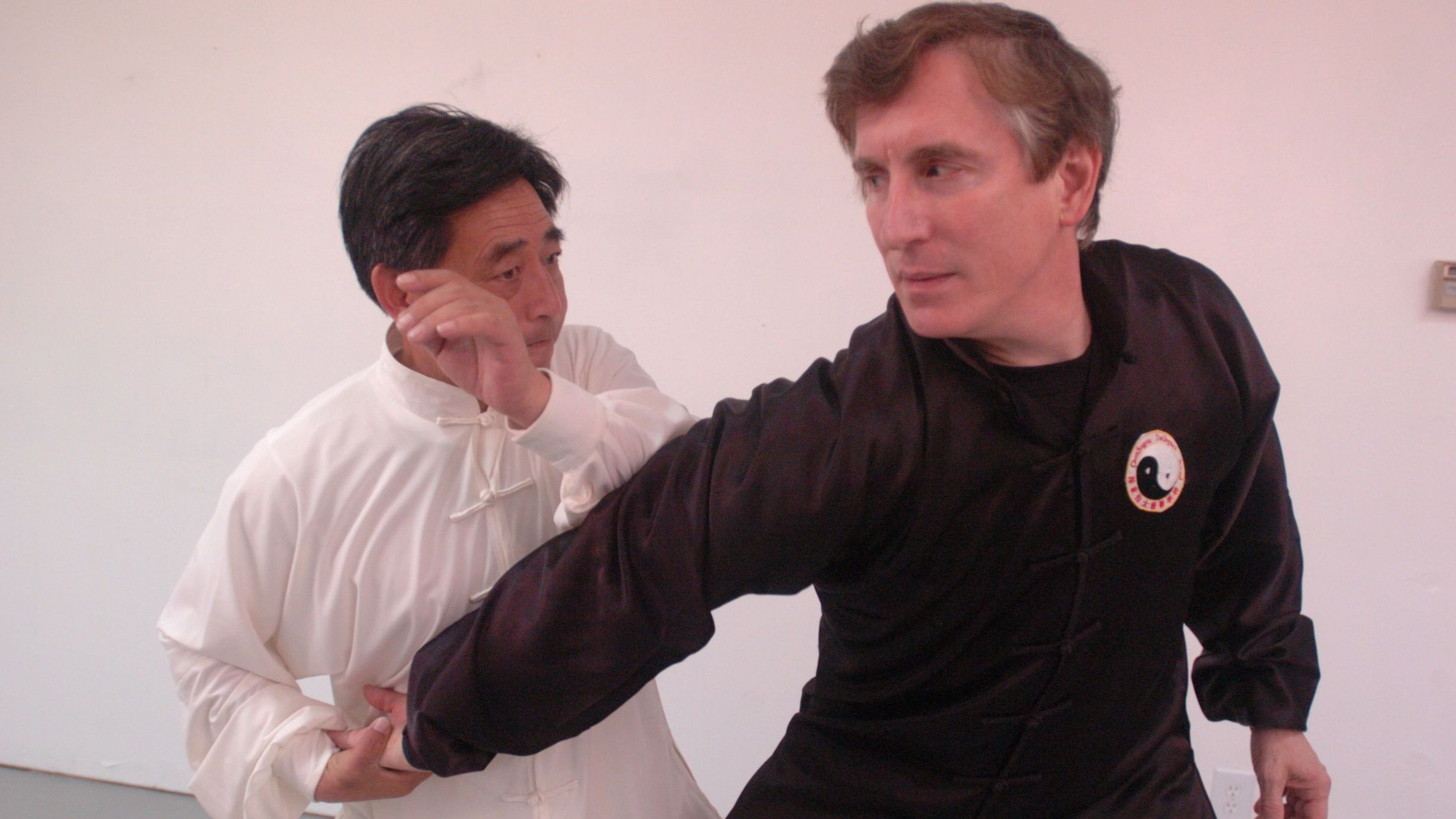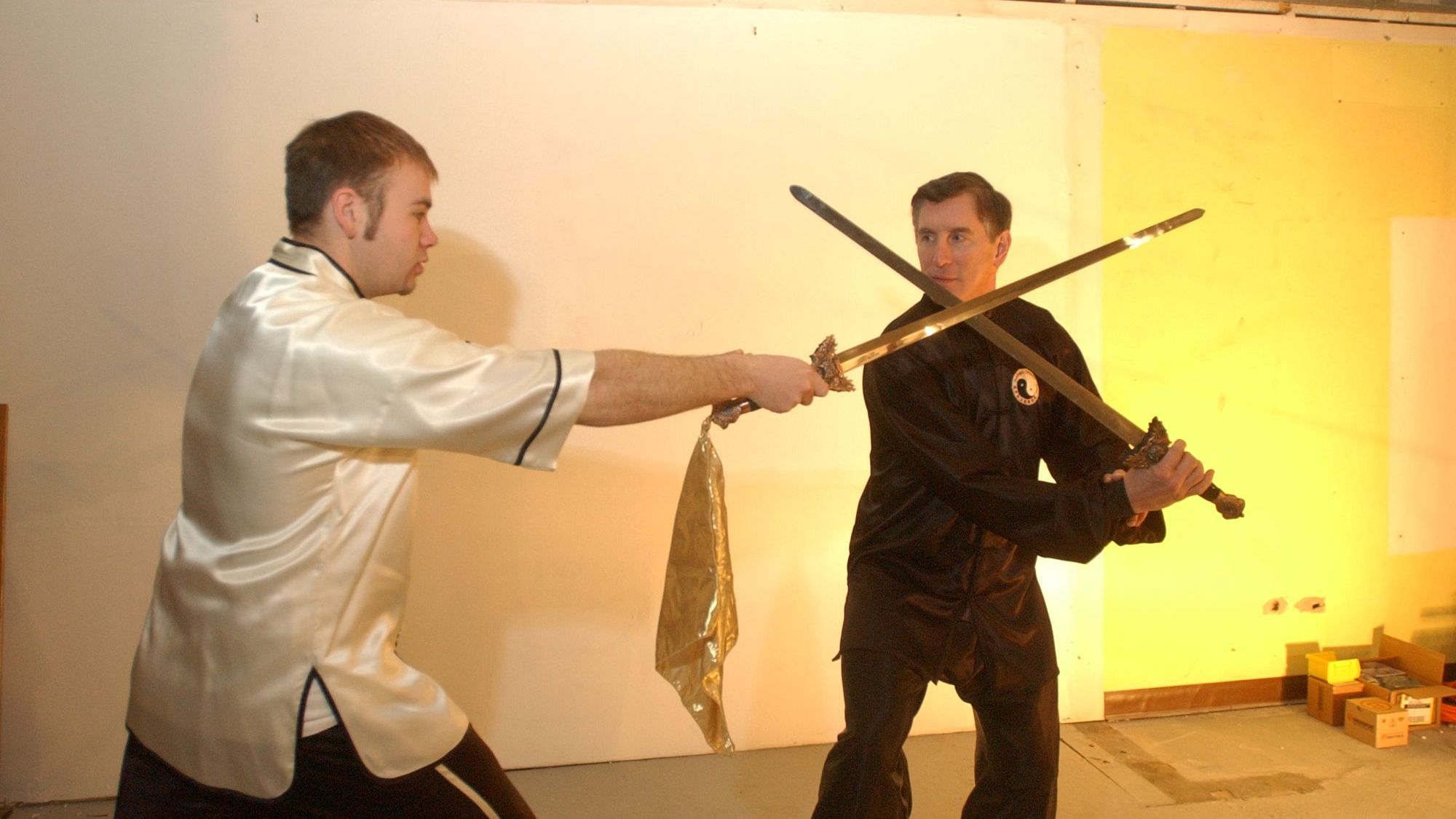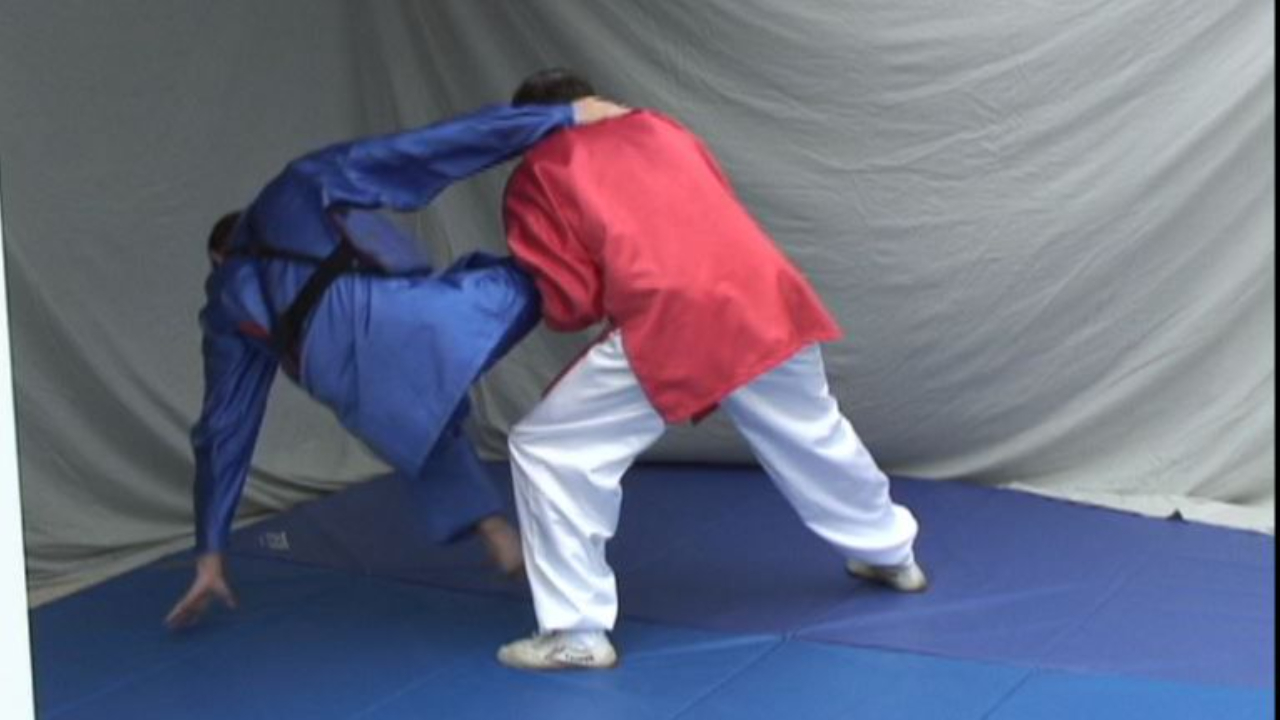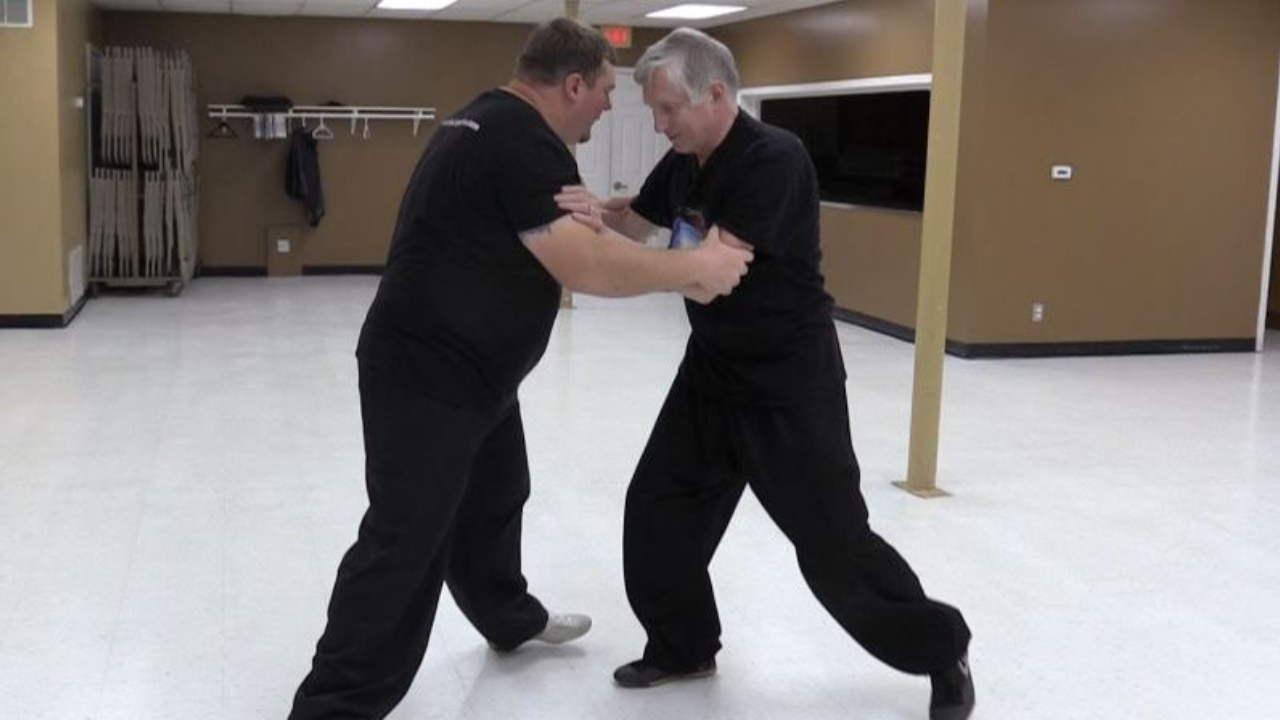Can You Lift Weights and Do Tai Chi, Xingyi or Bagua?

Write It Down: How to Get the Most Out of Your Teacher's Corrections

In 2005, I had the opportunity to spend a couple of private days with Grandmaster Chen Xiaoxing. My teacher at the time, the late Mark Wasson, invited me to his home in Livermore, California, for an exclusive opportunity to hang out with him shortly after Xiaoxing arrived in the country for a tour of workshops.
We spent most of the time going through Laojia Yilu, movement by movement. Grandmaster Chen and Mark would watch as I did a movement, then Xaoxing would make comments and gestures, and often hands-on corrections. Mark would listen and watch his comments intently, then interpret with additional instruction.
I was grateful to have such a valuable opportunity.
When I left Mark's home to drive back to San Francisco to the airport, I was a few hours early, so I stopped at a park, went to a table, and started furiously writing notes. I continued on the airplane flying back to the Quad Cities. Starting with the Opening movement, I went step-by-step through the form and wrote down ...
Chen Tai Chi Straight Sword Applications from Internal Fighting Arts

I recently shot applications for the entire Chen Tai Chi Straight Sword Form for my website. I've always believed that if a student is going to learn a weapons form, he should know how it is used in combat. For each of the weapons forms that I teach in Chen Taiji, Xingyiquan and Baguazhang, I teach the body mechanics and fighting applications, too.
This is a very short video showing two applications from two movements in the form -- "Ancient Tree Entwines its Roots" and "Hungry Tiger Searches for Food."
The straight sword was a popular weapon on the battlefields of ancient China. Fighting with a straight sword was a high-level skill. These two sword-fighting applications involve deflecting, sticking, following, controlling your opponent's blade and thrusting.
The video of all the sword applications is available only on my membership website, along with over 700 other video lessons covering the three internal arts and Qigong. There are also ebooks for members to download as part of t...
Chen Xiaoxing Gives Private Push Hands Lesson in Chen Village

This video shows Grandmaster Chen Xiaoxing giving a private push hands lesson to my former teacher, the late Mark Wasson, in the early 2000s.
Mark was on one of his many visits to train with the Chen family in Chenjiagou, but it was a cold winter day and in those days, the village was still without heat in most of its buildings. So Chen Xiaoxing graciously came to Mark's hotel room to train him.
Mark died in 2013 after a long battle with Crohn's Disease. He helped to popularize Chen Taiji in the United States, sponsoring or arranging sponsors for Chen Xiaoxing and others to visit the U.S. for workshops, and Mark also took several Americans to Chen Village to train.
When I studied with Mark, I sponsored Chen Xiaoxing's visa for his 2006 visit to the United States. In return, Chen Xiaoxing stayed in my home for a week and we practiced like this every day. I learned a lot and, after being thrown to the ground so many times, got a brand new perspective of my basement carpet.
This is p...
What "Intent" Really Means in Taiji and the Internal Arts

I am currently updating my instructional videos for the Chen Tai Chi form Laojia Yilu, replacing video shot between 2008 and 2010. As I was shooting instruction on Sunday for the second movement of the form -- Buddha's Warrior Attendant Pounds Mortar -- the concept of "intent" came to mind as something a lot of people misunderstand.
A lot of Tai Chi instructors talk about "intent," but too many students are left with the impression that intent is somehow connected to "cultivating chi" or other mystical, healing energy nonsense.
Let's cut out the noise, eliminate the middleman, and cut to the chase.
"Intent" means exactly what it implies. What is the intent of the movement? What are you intending to do with this movement?
The answer is almost always a self-defense application.
Tai Chi was created as a martial art. Every movement in the form is a self-defense movement.
When you perform Tai Chi movements with the intent of self-defense, it informs how your "energy" should be use...
Internal Body Mechanics Come Together in Silk-Reeling Exercises

The body mechanics of real Tai Chi are very different than other "hard" martial arts that I had studied. I had been a student of Shaolin, Taekwondo, Wushu (Tien Shan Pai), and I had practiced karate on my own. I had also studied Xingyi, Bagua, and, as I mentioned above, Yang Tai Chi.
Nothing prepared me for the nuances and subtlety of Chen family Taijiquan. Over time, as I learned from Jim and Angela, the late Mark Wasson, and masters such as Chen Xiaowang, Chen Xiaoxing,
Ren Guangyi and others, I began to isolate six crucial body mechanics that yo...
Taiji Grappling and Taking Advantage of Your Opponent's Energy

Anyone who reads this blog regularly knows that it is a mistake to interpret the term "energy" in some mystical way. Energy can simply mean "force" when discussing the energy an opponent is directing at you.
Energy can also mean "method" to describe a way of dealing with the force your opponent is directing your way. In other words, Cai Jin (Pluck Energy) describes a method of plucking or jerking to put your opponent off-balance. There is no actual "energy" called Cai in your body.
Many Westerners are inclined to believe things literally -- Adam and Eve, ghosts and psychics, etc. -- and so mythology has developed around the energy of the internal arts. You don't gain skill by increasing chi, your "chi" increases as you work like hell, gain experience, insight, and develop skill as you do in any sport, any physical endeavor, any trade or profession.
I love the grappling skills associated with the body mechanics of Taiji -- how to feel my partner's energy and take advantage of it to...
How Zhan Zhuang - Standing Stake - Can Improve Your Tai Chi

Zhan Zhuang is also called "Standing Stake" or "Standing Like A Pole." It is the most important exercise in Tai Chi. It can be used for meditation and qigong, but it also will help improve your Tai Chi.
Here are the basics of getting into a Zhan Zhuang stance:
1. Stand with your feet shoulder-width apart.
2. Raise your arms as if hugging a tree with the palms facing you.
3. Relax the knees and let them flex a bit.
4. Relax every muscle in your body - neck, shoulders, chest, abdomen, hips and legs.
5. Keep the head up and the chin slightly tucked.
6. "Sink" your weight -- your "energy" -- and feel as if your weight is sinking into the ground or floor.
7. Calm the mind along with the body.
Here are important things you need to incorporate into your Zhan Zhuang practice:
8. Relax the lower back. We usually keep it tense when we are standing. When you relax the muscles in the lower back, you will feel your buttocks sink and "tuck" slightly. That is a good thing.
9. You should ...
Connecting with Your Opponent's Center in Tai Chi

When you and a partner are doing push hands, or if you find yourself in a situation that calls for self-defense, one of your primary goals is to "remain centered."
Remaining centered requires you to maintain your mental balance and physical balance. If you lose your balance -- mentally or physically -- you are vulnerable. The same is true for your opponent.
This means that one of your goals when facing an opponent is to find his center, connect with it and control it.
On my website there are videos related to this topic. You can meld with your opponent's center as it is turning, helping it continue in the direction it is traveling. That's my favorite way to control an opponent's center, but there is another way.
When you practice push hands with a partner, you try to remain sensitive, and you do not want to give him an opening. You hide your internal strength from him. You are relaxed but aware, connected through the body, but you are flexible, moving, and able to respond and ...
Chen 19 Form - New Ebook Teaches Chen Tai Chi Short Form Step-by-Step

How many times have you looked at a martial arts book that teaches a form (kata) and find that you are confused about how to get from one movement to the next -- little "transions" are left out of the photos?
And how many times have you been disappointed that the instructions for the movements lack depth? Step out with your left foot is not always helpful when more is supposed to be happening inside your body.
This is why I am putting the forms I teach into ebooks. The new ebook is called Chen Taijiquan 19 Form - Detailed Step-by-Step Reference for the Short Beginner's Form of Chen Tai Chi. It includes more than 200 photos -- almost a frame-by-frame breakdown of the form. In fact, I was flipping through the pages fast on my iPad and it almost looked like a movie.
I also discuss the body mechanics and direction the Dan T'ien is rotating, where the ground path should be felt, and other details that are almost impossible to find.
The Chen 19 Form was created by Grandmaster Chen Xiao...
